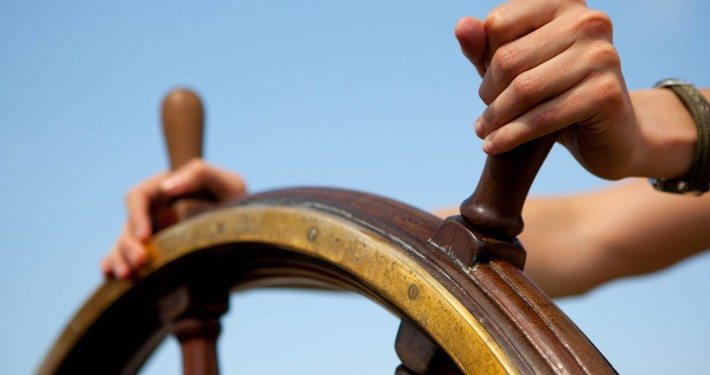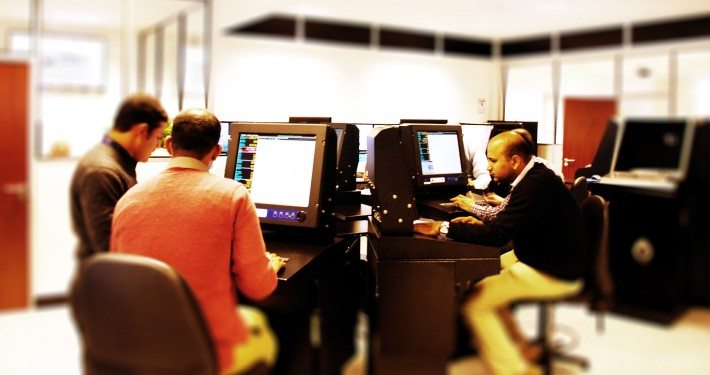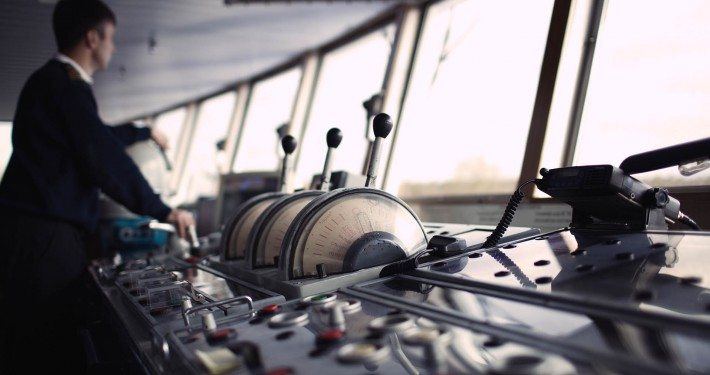Recent high profile incidents have raised the issue of training both in terms of systems and also ENCs. What is available in terms of training? What are the training considerations when transitioning from paper to e-Navigation? What’s available? What’s needed? What do you need to know to manage it well and what are the implications of getting it wrong?
Watch the video of a Panel Discussion and Audience Q&A from Session 4 from IEC09 on the subject of ECDIS Training, or read the full transcript below. Mark Broster from ECDIS Ltd is on the panel of experts.
20 Oct 2009 14:40 GMT
Video Duration: 26 mins 05 secs
http://insitu.mediasite.com/mediasite/Viewer/?peid=874b1971f3e74fe187fd73a2da06bc2b
Panel:
Melissa Hyak, Host (MH)
David Patraiko, Director of Projects, Nautical Institute (DP)
Captain Petter Brandt, Navigation Superintendent, Stolt Tankers BV (PB)
Mark Broster, Managing Director, ECDIS Ltd (MB)
MH: When you get software and hardware the manufacturers provide some form of training. Surely the motivation for these manufacturers is to provide training that would not sabotage their products so that you can use them safely. So, what is the difference between manufacturers training and specialised training? David.
DP: Yes, thank you. Not an area of particular expertise, but manufacturers are only required to provide documentation according to the IMO requirement. They are not required to provide training. Some of them do, some of them may even offer it for free but this is something that certainly the industry will have to develop as we get more complex systems. And I know that once we start going into areas like the INS standard there actually is a very mature requirement for familiarisation that will be built into that, but I know that one of the challenges for the manufacturers of course is that manufacturers fundamentally are not trainers. They tend to be engineers and if you want good training material there have to be resources to develop that.
MB: Can I have 30 seconds to introduce myself?
MH: Of course.
MB: Hi, my name is Mark Broster and I’ve spent the past six years either at sea working with ECDIS or delivering the Flag State approved course to just over a thousand mariners over the past six years. I’m an ex Royal Navy Fleet Navigator and recently I’ve been augmented back into the Royal Navy through the Reserves to basically take them through the whole Electronic Navigation process. I work for ECDIS Ltd which is a company that has pooled together the leading experts in ECDIS training at sea and ashore and we deliver training mobile. I would like to answer the question now, thank you. I think basically what you’re saying is ‘what is the difference between type specific and generic ECDIS training and what is the requirement?’ I’d like to make it quite clear that I think generic training is the most important thing, obviously as that is what’s mandated. It’s the principles of how to do electronic navigation that is the important bit. The type specific is really just a menu structure that can be conducted by either the manufacturers themselves or even a manual, dare I say it. The actual principles of navigation haven’t changed at all. How we’ve been navigating at sea for over a hundred years hasn’t changed in any way whatsoever, and the generic course takes those base principles and converts them into ECDIS. So, really, in answer to the question the generic ECDIS course is the most important thing, the type specific, the Rolls Royce scenario would be to have a full 5 day type specific course on the kit you’re going to use. But I don’t think that is practical so I suggest that ships do the full generic course and then request the manufacturers go onboard and show them through the menu structures should they not have the manual available.
MH: Captain Brandt, in your experience what value can you add in going outside for training?
PB: Well, our approach has been to, a little bit doubt the generic ECDIS training so, that is why we pull all our people through a CBT course as well as a refreshment training. For ships sailing on paper full ships, if you want to call it that, we put a lot more gunpowder into the type specific training course where we go through as much as possible of what’s in the IMO model course but adjusted to suit our needs from a commercial point of view as well. So that way we sort of gain benefits from both ends and it becomes rather efficient.
MH: David, from what you have said, how would you characterise this? Would you say that the knowledge gap on shore about ECDIS is greater than at sea?
DP: I think there are probably two different types of knowledge gap. I think that there is generally a misunderstanding with many shore management and particularly the purchasing department on what can be used for navigation and what can’t be used for navigation and what training requirements are there. Quite often we see that companies who aren’t as aware of the issues will budget for hardware and installation but then assume that either the training is included or that the training is not required, and then that comes outside the budget and there are pressures there. In terms of knowledge gap at sea, like I said, one of the most important things is that there is very much of a misunderstanding of most mariners as to what it is and what it can be used for. Like I said, most of the systems out there today are not ECDIS and should not be used for navigation. It is illegal to use it for navigation under SOLAS requirements and yet that is very much misunderstood, I think.
MH: People can’t tell the difference between ENCs and ECS. Why do you think unofficial data seems to be so popular, vis a vis official charts?
DP: I think there are two main reasons, one is cost, that they can be cheaper and two, is their functionality. They can be easier to use. You have a seamless vector catalogue for your trading pattern, particularly if you’re going around the world. It’s quite frankly much easier to use than something like a dual-fuelled.
MB: I honestly don’t know to be honest with you. It should be fairly obvious whether it is an ECDIS or not. You usually see the great big DNV badge on the system and hopefully people know. I’ve seen a huge general shift in trends now and people are wanting more and more ECDIS obviously, and all the stuff we talked about over the last two days makes absolute perfect sense, reducing costs etc. But, it is an educational process making sure people understand the difference between them. But, I’m not overly sure why that’s happening.
PB: Well, we are being scrutinised every other week. We have so many different organisations coming onboard doing inspections so we have procedures in place and our guys know.
MH: With the mandation of ECDIS we’re looking at something like, I read somewhere, correct me if I’m wrong, something like three hundred thousand people who have to be trained worldwide. So, we are looking at huge training capacity. Now, how concerned are you that there will be enough so called official trainers or correct trainers of correct quality, or could it happen that you might have sort of the case with ECS that you have so called cowboys coming onboard and saying, look, we can train you very well on ECDIS as well?
MB: Well, we’re actively recruiting if anyone is interested in a job! There is definitely a potential problem for this. I’ve heard figures of more than that. I’ve heard figures up to half a million people that need to be trained in this. It is an issue, a huge issue but I think you’re right on the sort of cowboy problem that may start to come in. I think the training has to be Flag State endorsed. I think it has to have layers of quality control. I think the course also has to be pass or fail. I think we have to up the standards of the course and there has to be feedback going back to the shipping company at the end of the course telling them how the students did. But it is a huge issue but I don’t think it is going to happen overnight. I don’t think we need to train these three hundred thousand people by next year. So there should be plenty of time to implement it.
MH: Now David, in your presentation you said that there has to be a guide. So, who do you like to see take up this responsibility? Perhaps one of the official institutions, the IMO perhaps? Is it moving fast enough when it comes to training?
DP: The training has to meet the implementation, and like I was saying there aren’t that many approved systems out there. And it’s only the approved systems that Flag administrations have approved for use as the primary navigation system that actually require the training. So, you get this huge grey area between there and you’re very right that in the run up to full implementation there probably will be a log-jam of getting people trained. As Petter said, not all training organisations are capable and we’re hearing that from a lot of ship managers. There really isn’t an approval system for ECDIS courses and perhaps that needs to be something that’s brought into the white list process for the IMO training requirement.
MH: So, you would like to see some sort of accreditation system perhaps?
DP: I think that would be good but who accredits and where the resources for doing that accreditation would come from would be a big issue to get around.
MH: Petter, you talked about having to shop around the world for the right people to train. Would an official accreditation help people?
PB: It would probably improve the chances of getting a visit from us.
MH: At this moment in time let me get some comment from Captain Ward about that. Captain Ward is from the IHB.
CW: I’m not in a position to really comment directly on the provision of training. You may recall yesterday I said that the IHO and its member states certainly have a very important role in advising the trainers on the appropriate use and interpretation of the chart information that is provided in ENCs. But, it would not be our role, I think, to actually either deliver the training or how to operate the ECDIS in a competent fashion, nor to be an endorsing authority for that. But I do know already that under the current regulations a number of maritime administrations have validated and authorised training based on the IMO model course. So there already is an accreditation process in place from a number of administrations, primarily those who have already issued implementation instructions for the use of ECDIS under the current SOLAS regulations.
QQ: Question from a member of the audience representing Singapore Maritime Academy, for PB. Normally, our safety training we normally always try and calibrate or, let’s say, validate it by talking to shipping companies and inspectors and other things. So, I just want to check from Stoldt, what is your experience from your internal auditors and your SIRE/CDI inspectors, are they able to do a very successful navigation audit onboard your ships which are paperless? Are they able to give you good feedback as to how the people are managing the paperless ship?
PB: Well, it’s difficult to qualify or quantify how successful the inspectors are, how good they are but, of the track records we have from our ships both from a safety point of view but also from an inspection remark point of view our paperless ships have been very successful. We had no value from either SIRE or CDI or state control inspectors and that is usually a good sign because you only hear the bad things from those people so they very seldom say anything positive. But the feedback from our crew is that it’s normally fairly straightforward inspections. They are usually quite impressed or that’s the impression our crew have of the response for the CDI inspections and the SIRE inspectors. They are impressed of what we’re doing. So, I guess that’s perhaps a quality mark.
MB: That’s a very good question. Further to the question that you asked, the ships at sea potentially know more about ECDIS than some of the support mechanisms ashore. It is very interesting, and the first time I can really think that this has happened, where the actual user knows more about the product than the people that assess them and support them as such, and maybe it is just because we need those people to leave the ships at sea, the experienced mariners at sea using ECDIS and come back into the shore side establishments to assess and to train and, maybe that’s going to happen more and more over the next five or ten years, but absolutely, it’s a good question and definitely the balance of power is with those who have been using it at sea and the knowledge. So it must be quite difficult actually for a superintendent who’s never used ECDIS at sea to be able to add some value to their life. Interesting.
MH: A good question has to be answered though. So how do you include the onshore teams?
MB: I think they should do the ECDIS course.
PB: Well, it is a matter of internal marketing and training. We need our good guys onboard the ships because that’s where the action is. Obviously, you need some experience shore side as well but we also do have a pretty good cooperation with our people, with our new building team, our take out team and such and they regularly come into the office and we have good communication, so we do share the experience internally.
MH: You talked about extensive familiarisation before people are let out but what are you referring to when you say extensive. I mean, how much familiarisation before the crew first sails on an ECDIS ship?
PB: If you talk about the ships still using paper charts which is a majority of the Fleet, although we have a programme in place now to start rolling out towards going paperless in a more larger scale, we made sure people had the basic ECDIS training when they went to ships with ECDIS. We had a number of ships that didn’t have a unit at all but when they came to serve on a ship with a chart system they also got the basic training in one way or another. Then we left them to work it out themselves, familiarise themselves with it, play around and figure it out and then, when we recruit people to go to the paperless ships they already have a lot of experience of working with the system which makes the learning process more in depth when you’re going to work solidly with the ECDIS and not have any paper charts anymore. Then that learning process is so much more successful.
MH: I can’t confess to love mathematics but I love numbers. I know that in terms of training there is a dispute out there. How many days do you train? Some seem to think a basic course of three days is enough but others say you need to do training up to two weeks, perhaps more. So, what would your recommendations be? David and then Mark.
DP: Well, as a representative of a professional body I’d probably have to extend it. But I do think the feedback that I get talking to some of the shipping companies and some of the training organisations themselves is that a potentially good, solid forty hour application generic is needed. That certainly less than forty hours for generic is too much of a challenge. Then, of course, the familiarisation aspect of it needs to be addressed on top of that and I think that is probably what we should be shooting for and probably what the market will bear.
MB: Yes. Really it depends I think, obviously as we talked about there, the standard of the students as well, and the experience of the students and also what you’re actually training. If you’ve got a five day ECDIS course and you make someone sit in a simulator for six hours watching their ship drive in and out of their base port, then you haven’t really added any value to their life on ECDIS training for the last six hours. So, if you have a good solid forty hour course and it’s pitched at the right level and the delegates for the course are of the right standard as well, which is very important, then that’s about right, I think, five days. But then as long as you have a familiarisation period at sea, as you say, before you actually go digital.
MH: Petter, your experience from day one of training to first day of sail?
PB: Well, I mean, we are not only looking at the view of safety perspective but we also have a commercial perspective. It needs to be handled in a proper way to make business sense. So, it’s quite difficult to say, it all depends on the prerequisites. If you have a person who has been working, he has been through a basic CBT which is, well, it could be debated on the quality of those but he’s been through that and been working and been a very interested person in how it works and educated himself or herself then I suppose you could go through the subject of the course rather quickly. But if you have never seen a system before, ever, then you need more training and I think we should aim at a set standard rather than a number of hours you need to go through training.
MB: Just to further enforce the point on familiarisation, I think that also has to be addressed. How long is familiarisation, as a guidance? Because it is a dangerous period, familiarisation at sea, because you’re trying to run a paper outfit and an ECDIS outfit. It really distracts the Officer Of the Watch who is trying to plot the position on two charts, effectively. I think we can give some guidance on that. Is it four months familiarisation, because that is also an equally dangerous time.
QQ: Question from Captain Saiw at APL. I would like to comment on ECDIS training. Currently, most Institute trainers are not ECDIS users themselves. I am myself involved in this ECDIS training. Actually, we learn a lot from those participants but then without experience of using ECDIS how are you going to train people? You know that the ECDIS, most of the time hangs. A lot of the time ECDIS hangs and you don’t know what to do. So, the focus on navigation most of the time is lost because they are focussing most of their time on trying to troubleshoot the ECDIS. What is wrong with the ECDIS rather than focussing on the navigation. So, I think it is very important to involve those people that are using ECDIS to conduct that part of the training.
MH: Thank you. Was there a question?
QQ: It is a comment rather than a question. One of the speakers said that it is not necessary to involve a person who has been using ECDIS.
MB: You could have made that into a question by asking how we do it. And actually you can. I think we need to work more with the Hydrographic Offices. I think the course needs to have specialists on there from the different departments, perhaps guest speakers in the middle of the course from someone who has recently done it, if not video clips or breakdowns of the recent enquiries, MAIB etc. and delegates from Hydrographic Offices. But yes, you are right, we need to make sure the instructors have practical application of ECDIS at sea.
PB: Yes, what we need to realise and be aware of is it is not enough to be very experienced to be a good trainer, you need to be a good trainer as well. You need both skills. Being a trainer is a specialist skill. So, you just can’t take anyone with experience and put that person in a classroom situation.
Debate ends.






